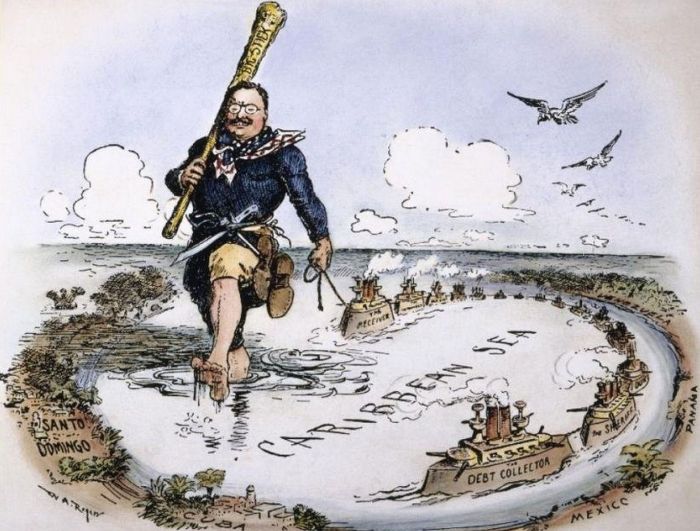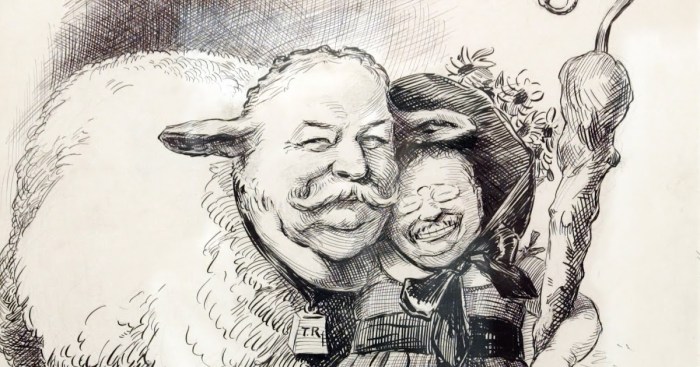What did dollar diplomacy produce in latin america – Dollar diplomacy in Latin America stands as a compelling chapter in international relations, where the United States wielded its economic and political might to shape the region’s destiny. This narrative explores the multifaceted impact of dollar diplomacy, examining its successes and failures, its consequences, and the resistance it encountered.
The era of dollar diplomacy witnessed the rise of US economic and political dominance in Latin America, as corporations invested heavily in the region’s infrastructure and resources. However, this influence sparked resistance movements, igniting nationalist sentiments and challenging US hegemony.
Economic and Political Influence

Dollar diplomacy strengthened US economic and political influence in Latin America by:
- Providing loans and financial assistance to compliant governments, creating economic dependence.
- Investing in infrastructure projects that benefited US corporations, securing economic control.
- Appointing pro-US officials and influencing elections, ensuring political alignment.
Examples include the US intervention in Nicaragua (1909-1933) and Haiti (1915-1934), which established protectorates that served US economic interests.
The long-term consequences of US economic and political dominance included:
- Increased foreign debt and economic inequality in Latin America.
- Limited economic diversification and stifled local industries.
- Political instability and resentment towards the US.
Resistance and Nationalism

Resistance movements emerged in Latin America in response to dollar diplomacy, led by:
- Intellectuals and students who criticized US imperialism.
- Political leaders who sought independence and sovereignty.
- Labor unions and peasant organizations that fought for social justice.
Key leaders included José Martí in Cuba and Augusto César Sandino in Nicaragua.
Resistance impacted dollar diplomacy by:
- Challenging US justifications for intervention.
- Mobilizing public opinion against US policies.
- Inspiring armed uprisings and nationalist movements.
Investment and Infrastructure
US corporations invested heavily in Latin America during dollar diplomacy, primarily in:
- Mining and extraction industries, such as copper in Chile and oil in Venezuela.
- Agriculture, including banana plantations in Central America.
- Transportation and communication infrastructure, such as railways and telegraph lines.
Infrastructure projects included the Panama Canal, built by the US in 1903-1914.
The economic benefits of these investments included:
- Increased exports and foreign exchange earnings.
- Improved transportation and communication networks.
- Job creation and economic growth.
However, there were also drawbacks:
- Exploitation of local resources and labor.
- Environmental degradation.
- Increased dependence on foreign markets.
Military Intervention: What Did Dollar Diplomacy Produce In Latin America

The US carried out military interventions in Latin America under dollar diplomacy, justified by:
- Protecting US economic interests.
- Maintaining order and stability.
- Promoting democracy and human rights.
Consequences of military intervention included:
- Casualties and human rights violations.
- Destabilization and political repression.
- Damage to US-Latin American relations.
Diplomatic Techniques
The US employed diplomatic techniques to promote dollar diplomacy, including:
- Negotiating treaties and agreements that favored US interests.
- Using diplomatic pressure to influence Latin American governments.
- Sending special envoys and establishing diplomatic missions.
Diplomacy shaped US foreign policy by:
- Avoiding direct military conflict.
- Legitimizing US interventions.
- Creating a sphere of influence in Latin America.
Essential FAQs
What were the main goals of dollar diplomacy?
Dollar diplomacy aimed to promote US economic interests and political influence in Latin America by encouraging American investment and intervention in the region.
How did dollar diplomacy impact Latin American economies?
Dollar diplomacy led to increased US investment in Latin American industries, infrastructure, and natural resources, which had both positive and negative economic effects on the region.
What was the role of resistance movements in countering dollar diplomacy?
Resistance movements emerged in Latin America to challenge US economic and political dominance, advocating for local sovereignty and economic self-determination.